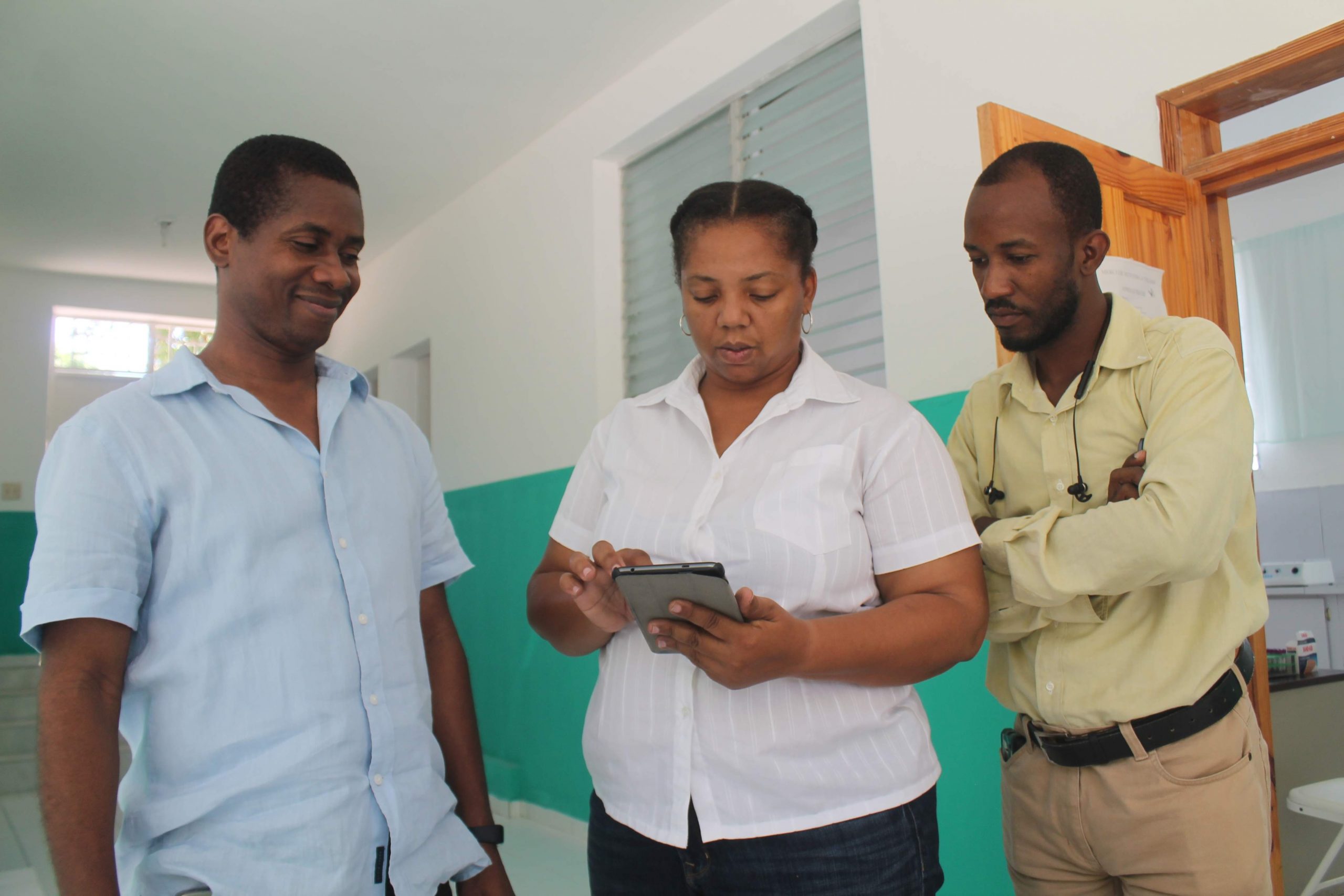
Assessing WASH in health care – Emory Global Safe WASH work
STORIES |
Emory University
Walking into the outpatient bathroom of a hospital in Kenya, the facility’s Quality Assurance Manager cringed. The smell was overwhelming, and broken sinks hung precariously off the wall. One of the latrines was entirely clogged up. “It doesn’t usually look this bad,” the manager began, though she admitted she had only visited this toilet facility a handful of times over the past few years. As the enumerators ran through their assessment checklist, they described what they were looking. “Just providing an improved toilet to patients not sufficient. These toilets must be functional, accessible by all including those with limited mobility and have facilities for menstrual hygiene management. We also look at the hygienic condition of the toilets and whether there is soap and water available for handwashing.”
Over the past five years, Emory University’s Center for Global Safe WASH has assessed more than 400 health centers and hospitals with the WASHCon tool. We’ve seen the good, the bad and the ugly. More importantly, we’ve sensitized facility management and staff to the gaps in their WASH services based on international requirements. Data shared back to partners shape priorities and implementation plans.
Assessments are crucial for identifying areas for improvement as well as monitoring the progress towards universal coverage of WASH services in healthcare facilities. Before starting an assessment, it’s important to consider existing survey tools, indicators and questions specific to WASH in healthcare facilities.
Indicators and Questions
Until a few years ago, much of the data on WASH in healthcare facilities came from large-scale facility assessments, including WHO’s Service Availability and Readiness Assessment (SARA), World Bank’s Service Delivery Indicators (SDI) and USAID’s Service Provision Assessment (SPA). These surveys touch on the very basics of WASH – are water, toilets and hand hygiene materials available? In addition to providing insufficient detail, some WASH questions were never adapted to the healthcare settings.
Recognizing the need for more specified data, WHO and UNICEF gathered experts in 2016 to develop new indicators, drawing on Essential Environmental Health Standards in Health Care (WHO, 2008). WHO/UNICEF Joint Monitoring Programme for Water Supply, Sanitation and Hygiene (JMP) has since published the core monitoring indicators (water, sanitation, hand hygiene, waste management and environmental cleaning practices), each with associated survey questions.
The first baseline report from the JMP on WASH in healthcare facilities was published in April 2019. It drew on available data, some of which pre-dated the new indicators; the JMP therefore was unable to make coverage estimations for all service levels. As governments and partners begin to collect data on these indicators, we will have a clearer picture of the situation on the ground and better identify needs.
Selecting a WASH in HCF Assessment
There are two ways in which these WASH data can be collected. First, the new questions from the JMP can be integrated into existing facility surveys conducted by the health sector. For example, in 2017, Uganda met to discuss how to integrate WASH indicators into their HMIS.
The other way to collect this data is to use a survey specific to WASH in healthcare facilities. These tools vary in their scope and breadth as well as their use and availability. Some are meant to measure the JMP, while others provide additional detail. Several tools are focused explicitly on implementation while others can be used for monitoring purposes.
Here are a few highlights:
WASH FIT: The purpose of WHO and UNICEF’s WASH Facility Improvement Tool (WASH FIT) matches its name – to guides facilities make incremental improvements to their WASH services. Step 2 of the tool is an assessment, which includes four main domains: water, sanitation, hygiene and management. This tool was written for individual facilities and provides useful information on needs for improvement. However, it is not intended to be a stand-alone monitoring tool. WASH FIT Digital, a free, open-source tool, is also available.
WASHCon: Emory’s tool has been used by partners to assess and prioritize needs of healthcare facilities across Asia, Africa and Latin America. The tool is in depth and includes a scoring metric and online dashboard. Questionnaires are available for download and those interested in using the digital tool should reach out to Emory (WinHCFaction@emory.edu).
FACET: Developed by Terre des Hommes, Eawag and CartONG, this tool monitors WASH in both healthcare facilities and schools in accordance with JMP. Using digital data collection, the online dashboard calculates the service levels for each of the core indicators for both monitoring and implementation purposes. Those interested in using the tool should reach out the Eawag or Terre des Hommes.
Back in Kenya, the WASHCon assessment highlighted a number of gaps in WASH services, some of which the hospital had not been aware of. The hospital’s WASH conditions were compared to the JMP requirements, and with the implementing partner, key areas were identified for improvement. The data also allowed for the Quality Assurance Manager to raise WASH concerns with hospital management, considering the systems in place for sustaining WASH services.
You can also hear more about this in the WASH in Healthcare Facilities Initiative Assessments Webinar.
Photograph courtesy of Lindsay Denny.
